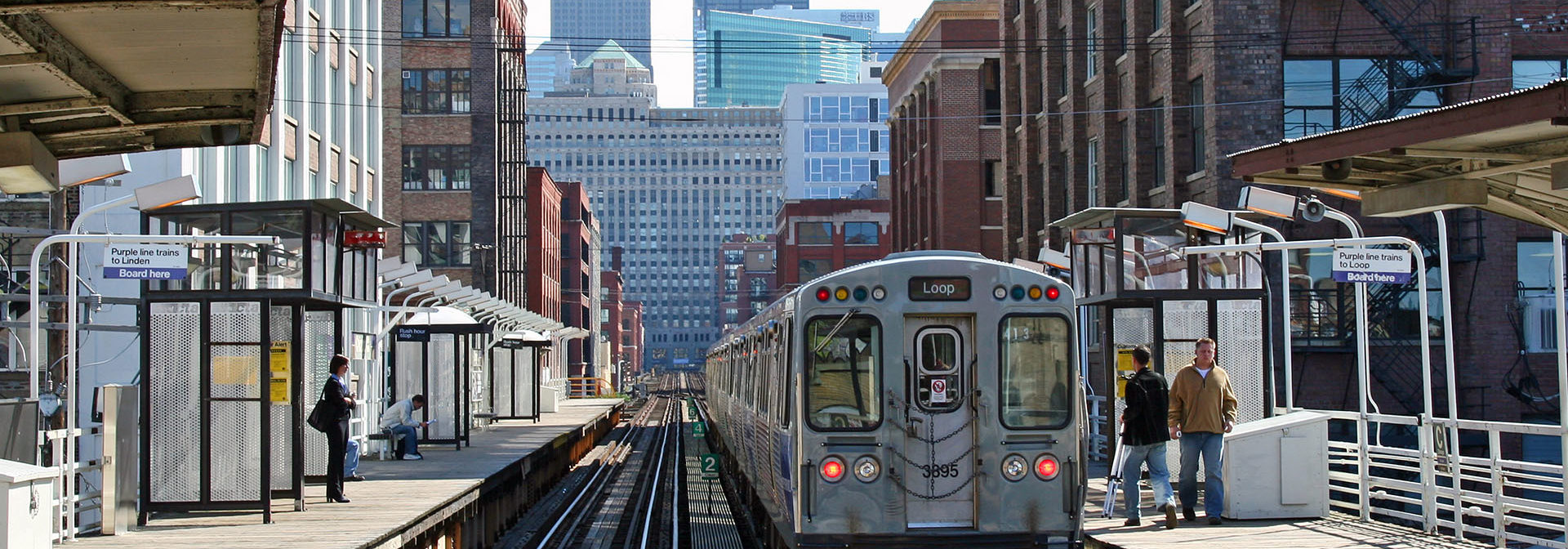
CTA – Chicago Transit Authority
Distributed IP video solution around the Chicago area.
CTA, one of the largest public transportation system in the United States, provides nearly two million rides every day. The CTA is a regional transit system that serves 35 suburbs, in addition to the City of Chicago, and provides 81 percent of the public transit trips in the six-county Chicago metropolitan area either with direct service or connecting service to Metra and Pace.
Since 2005, Teleste has helped the CTA build an IP video transmission, management, recording and storage system that allows operators to view and control cameras during daily operations and to respond quickly in the case of any type of emergency.
CTA’s security camera network has more than doubled in size since 2011 including high-definition and 360 fisheye security cameras. The cameras have been an important tool to help Chicago police identify crime suspects and detect crime patterns.
As of today, the CTA system forms an extensive surveillance camera network. About 10,000 cameras throughout the 146 station platforms, rail lines, garages, bridges, river crossings, on-board rail cars are fully interconnected to Teleste video management system, making it one of the most comprehensive surveillance camera networks among U.S transit agencies.
In 2019, CTA deployed the latest version of Teleste S-VMX, the Teleste’s IP video management system.
Teleste was selected for the project based on technology, integration of third-party systems, willingness to meet the CTA needs, and proven track record of delivering complex, large-scale systems.
– Representative, Chicago Transit Authority.
Customer need
The key objectives for the CTA system are:
- Ability to stop criminal activity as it is happening.
- Optimizing crime investigations.
- Interagency video content exchange.
- Easily scalable and maintainable system.
Solution to customer’s need
- Ability to view high-definition live video and control cameras across the network, search and view recorded video across the network, access both live and recorded video over the Internet, receive alarms from third-party systems, such as SCADA, respond to alarms in an automated/predefined manner, export encrypted & authenticated video for the prosecution of criminals, share video with other agencies.
- MPEG-4 and H.264 video streaming devices include a comprehensive video recording and storage capacity. System arbitration for fluent multi-client operations at several control sites.
- Field-hardened, fully managed Ethernet edge switches that provide network connectivity. Teleste MPX series MPEG-4 encoders for digitizing, compressing and migrating video from analogue CCTV cameras to the IP network. All cameras whether analogue or IP are seamlessly integrated into the Teleste video management system.
- An onboard video system in rail cars is provided by IP cameras, a PoE switch and a Teleste mobile network video recorder that is specially designed to meet strict vibration requirements. Onboard rail car video are available to the wayside system for live view, playback and video download.
- Use of video multicasting: only video streams that are being viewed are transmitted over the network (reducing network bandwidth requirements). Additionally, multiple authorized users can simultaneously subscribe to the same streams (as opposed to sending separate stream to each user).
- The heart of the CTA video system is the Teleste S-VMX video management, recording and storage solution. The solution is based on a distributed architecture, which makes it possible to place servers and other components at any location within the network.
Benefits achieved
- Ability to: view live video and control cameras across the network, search and view recorded video across the network, access both live and recorded video over the Internet, receive alarms from third party systems such as SCADA, respond to alarms in automated/predefined manner, export encrypted & authenticated video for prosecution of criminals, share video with other agencies.
- On-board video system in rail cars is provided by IP cameras, PoE switch and Teleste mobile network video recorder which is specially designed to meet strict vibration requirements.
- Use of video multicasting: only video streams that are being viewed are transmitted over the network (reducing network bandwidth requirements). Additionally multiple authorized users can simultaneously subscribe to the same streams (as opposed to sending separate stream to each user).